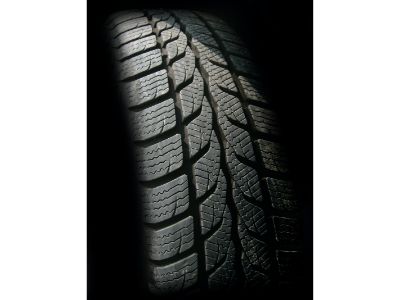Tyre selecting guide
What type of tyre do I need?
There are a wide range of tyres available to fit the many different cars on our roads today and choosing the right ones for your car can be daunting. Read through our tyre selecting guide to help you decide on the right tyre for you.

Things to consider:
The tyres you need will depend on what you use your vehicle for, the sort of mileage you do each year and the weather conditions which you are driving in.
Driving style
Your style of driving should dictate the type of tyre you select for your car. Tyres manufactured for high performance cars will have different characteristics than those manufactured for family motoring.
Tread Patterns
Tread patterns also play an important part in the tyre selection process. As well as performance, comfort is often high on the list for motorists; you should have a smooth, comfortable ride with minimal vibrations when driving over uneven surfaces and potholes in the road. This is dictated by the tread patterns along with how fuel efficient the tyre is and the noise level heard from inside the car when cruising along. Tyres now come with an EU tyre label rating to assist motorists in their purchasing decision.
Seasonal Tyres
The final criteria for selecting a tyre is the weather. Tyres are manufactured for specific seasons, if you are driving through heavy snow then you will require a winter tyre that has the capability to grip the snow. However, most manufacturers now offer All season tyres which perform well in all temperatures.
Our guide to seasonal tyres:
Summer tyres
These tyres have been designed to deliver optimal performance on dry and wet roads but at temperatures above 7 Celsius. However, once the temperature falls below 7 Celsius summer tyre rubber hardens which affects performance on wet roads.
All-season tyres
Increasingly popular are the all-season tyres. Offering excellent performance in summer, on wet roads and even in snow. Comfort, noise levels and above all else, safety is not compromised either. However, braking distances can be slightly longer than with summer tyres once the All season tyres have reached temperatures of over 7 Celcius.
Winter tyres
There are two types of winter tyre available for UK roads; tyres for snow and icy roads and tyres for mud and snow.
The tyres designed for snow and ice carry a snowflake symbol on them and the tyres designed for mud and snow have MS on them.
Related: Tyre symbol guide
Winter tyres have been designed with large treads to improve their grip in wintery conditions. These tyres also contain more natural rubber as this isn’t affected by the low temperatures meaning the tyres can continue to be flexible.
Use our Tyre selector chart to help you decide what tyre you need.
3 people found this review helpful



 Sign up for SPECIAL OFFERS
Sign up for SPECIAL OFFERS
